- Fitness, Mobility
THE DIFFERENCE BETWEEN FLEXIBILITY AND MOBILITY TRAINING
- By captdavid1
- On January 22, 2020

The different between flexibility and mobility is that one is the ability to get into a fixed position and the other is the control to move into a position. In MMA you are moving in multidirectional movement patterns and being jammed into several positions all throughout training and in competition. Enhancing mobility will give you the ability to be strong and in control of those unorthodox positions. Flexibility will give you the ability to be passively held in a position. Mobility can give you the overall control of your body through all facets of the sport. If you lack the control and strength at that position injuries will occur.
Mobility training starts with a base position utilizing FRC (Functional Range Conditioning) principles. These principals train several patterns that transfer to the sport. Positions include 90/90, butterfly, bear sit, and combat stance. Working through what are called PAILs and RAILs contractions following a static stretching to prime the tissue for change. Progressive and Regressive Angular Isometric loading is done with maximal intent to induce more range of motion. This should be done in a ramp up fashion then ramp down into a full stretch. The sequence should take about 3 minutes in each base position. Another modality I use is End Range Holds and End Range Lift Offs. These can be done at the end range of your true flexibility. Lifting off the base of support into a isometric hold will create more active range of motion in the joint capsule that correlates to the base position.
Stretching after training:
I still get this question regularly and the notion of stretching before training makes absolutely NO sense. Creating laxity in tissue and relaxing the CNS before you go to attempt to produce force is not going to work well for you. Now stretching after training? I have absolutely no problems with it. In fact I’ll encourage it. Mostly because it stops my fighters from doing extra shit after training. I’ll prescribe hitting the sauna and stretching first to increase a parasympathetic response and jump start recovery and second, so they do not go running another 5 miles after our training which leads to decreased adaptations (talk about that in a later article).
Mobility training can also be done through movement. It introduces the body to new patterns of overall movement and gaining more control. Not only will this improve mobility but it will also help increase athleticism. In my warmups I dedicate 10 minutes of active mobility and activation exercises to prime the fighters for the work ahead. These can be something like, fire hydrants, band walks, single leg glute bridges, leg whips, the perfect stretch, spider mans, swimmers, bear crawls, dead bugs, and bird dogs. All to help increase that active range of motion and turn on the central nervous system for the work ahead.
Most people are limited by their ability to sit into a squat and actively get out of the hole. Same goes for overhead presses, deadlifts and kettlebell swings. Someone who has tight hamstrings does not have the prerequisites to properly perform any posterior chain lift or exercise. A person who lacks mobility in the shoulder finds it hard to back squat or overhead press. Those with stiff hips, knees, and ankles have really no chance to adequately perform a proper front squat or deadlift. Not saying that people do not attempt this and it is extremely painful to watch. However we must work on increasing range of motion in order to get the best out of that exercise. Another benefit is enhancing the ability to put more tools in your game when it comes to fight specifics. Instead of always having to settle for a position or technique you can widen your base of skills.
Now that we have a better understanding of mobility and flexibility it is time to work on it. Dedicate time each week and look to maximize all aspects of training.
For details on FRC principles and video breakdown check out my videos: Phil Daru Youtube Channel





